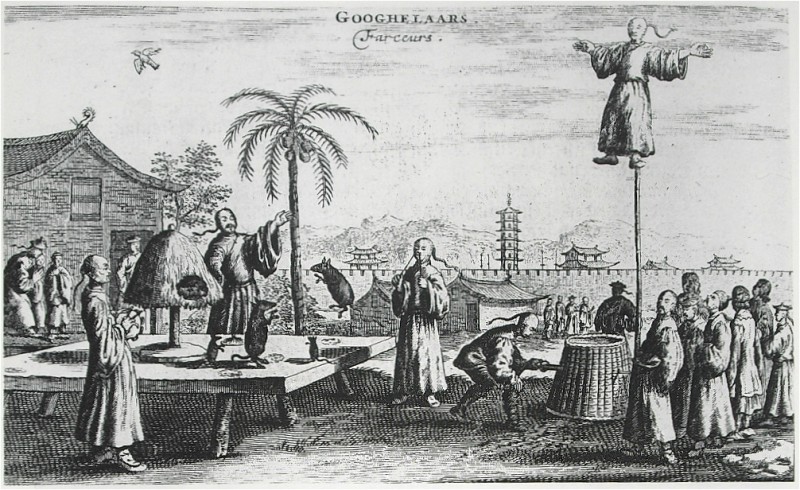
Chinese circus performers soon after the Manchu conquest, wearing queues. (Drawing by Johan Nieuhof, 1655–57)
The queue hairstyle (or pigtail) was a mandatory hairstyle worn by all Chinese men from the 1600s to the early 1900s. The queue was a hairstyle in which the front and sides of the head were shaved, and the rest was plaited into a braid.
The queue hairstyle was not merely an imposition but also became an integrated aspect of Chinese society and culture during the Qing Dynasty. It carried various meanings, symbolizing unity, conformity, and the complex dynamics between different ethnic groups and the ruling class.
The queue was initially developed by the Manchu warriors as part of their military outfit to keep their hair out of their faces and safely away from being pulled in close combat.
When the Manchus conquered China, they introduced this originally Manchu military hairstyle as mandatory for all ethnic groups in China, including themselves.
The initial purpose was assimilation; to facilitate the unification of the many diverse Chinese ethnic groups under a single imperial administration, promoting a degree of cultural exchange and integration, despite the persistence of distinct ethnic identities and traditions.
China has always been a diverse nation with a multitude of ethnic groups. When the Manchu people established the Qing Dynasty and expanded their rule over China, they governed a vast territory. The exact number of ethnic groups during the early Qing Dynasty might not be precisely documented as it is today, but there were certainly many.
Today, China officially recognizes 56 ethnic groups, including the Han, who are by far still the largest, plus another 55 ethnic minorities, including the Manchu, Mongol, Hui, Tibetan, Uighur, and Zhuang, among others.
As the dynasty progressed, the queue began to be seen less as a symbol of unity and more as a symbol of Manchu dominance and Han Chinese subjugation
At the end of the Qing Dynasty, there was increasing resistance against the queue among the Han population. The Manchus, despite changes and challenges, generally continued to maintain the queue as a part of their own cultural identity, not sensing it as subjugation but rather as a sign of unity and belonging, as had been the intention in the beginning.
See also: Hair bun
A